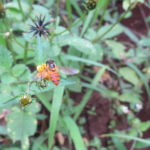


Pontificia Universidad Catolica del Ecuador
Grupo Yanapai, PROPINA, IRD
Bolivia
5/2009—5/2012
Climate change is likely to increase the risk associated with pests and contribute to a substantial threat to food security of thousands of farming communities in the Andes. The distribution of some pests is closely linked to and preached by the weather and pests are an excellent biological indicator of climate change, especially at this point. There are relatively few studies on the response of the Andean pests to climate variation and the interactions of agro-ecosystem.This project has established a monitoring network of climate and insect pests involving selected projects currently funded by CCRP in Ecuador, Peru and Bolivia. The pest network will study potato tuber moth species (in all countries), potato weevil in Peru, potato skeletonizer worm in Peru and quinoa stem borer in Bolivia. Work is done through laboratory experiments and farmer participatory field assessments of crop losses. The information is used in automata modeling to predict pest risks at the region level. At the same time, the project developed agent-based models for farmers to be able to evaluate pest and climate interaction.
Participatory activities in pest and climate monitoring and integrated pest management experiments.The development of predictive model of pest distribution and abundance levels to foretell farmers about potential outbreak risks.The use of agent-based modeling as a tool for farmer training. At a broader level, the goal of the project would be to develop innovative tools.
There are potato moth in the traps in the Huancavelica, which convinced the farmers it is a problem that they hadn’t perceived before the traps.Showed that there is not synchronization among three moth populations and that populations are more due to small scale local landscape factors, many mini-outbreaks. In general, a lot of new knowledge on the behavior and interaction of the three populations has been discovered.Models predict an increase in altitudinal range of the pest at the time horizon 2050.
